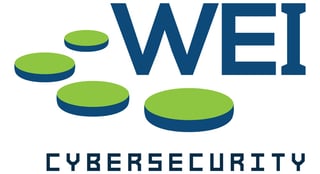 As threat actors get more sophisticated and aggressive campaigns become more commonplace, it is imperative that corporations step up their game. In the age of artificial intelligence (AI), machine learning (ML), and automation, the resources for a holistic approach have never been more available. Enterprises are starting to recognize the need to modernize their security operations center (SOC) with an advanced SOC solution. Unfortunately, CISOs everywhere are finding it difficult to identify a partner dedicated enough to conduct their due diligence about customer needs, identify potential solutions on the market, and deliver the know-how to implement the best technical solutions. WEI can do that.
As threat actors get more sophisticated and aggressive campaigns become more commonplace, it is imperative that corporations step up their game. In the age of artificial intelligence (AI), machine learning (ML), and automation, the resources for a holistic approach have never been more available. Enterprises are starting to recognize the need to modernize their security operations center (SOC) with an advanced SOC solution. Unfortunately, CISOs everywhere are finding it difficult to identify a partner dedicated enough to conduct their due diligence about customer needs, identify potential solutions on the market, and deliver the know-how to implement the best technical solutions. WEI can do that.
Legacy SOC architectures are complex with many interdependent tools and processes housed within them. Many current SOC’s were built 15 years ago when the threat landscape was very different and the threat actors being less capable. Today, these brittle and hard to maintain platforms struggle to deliver the response and resolution times that are required, which leads to SOC analyst burnout and disappointing outcomes. In an attempt to keep pace, corporations continue to try to hire their way out of this problem with little effect. It doesn’t have to be this way.
Don’t Make It A ‘People Problem’
There aren’t enough skilled security analysts on the planet to solve this problem. Analyst retention and burnout are very real problems. However, in what can only be described as a back-slide, many large consulting firms and Global Systems Integrators are doubling down on the “body shop” approach to security operations. For a few million bucks a year, they will set you up with a team of 30-40 tier 1 analysts to simply perform basic alert triage activities. Spending a fortune to maintain a 15-year-old model that is no longer effective doesn’t make much sense.
Forward-thinking organizations have begun to implement comprehensive automation strategies that fully automate Tier 1 activities and investigations. In many cases, much of the Tier 2 workload has been automated as well. This modern approach frees up their SOC and IR teams to focus on what is important – preventing critical incidents, hunting for threats proactively, and improving security posture.
The Modern SOC: Powered By Automation, Artificial Intelligence and Machine Learning
Ideally, all small, medium and large enterprises have some formidable solution in place for monitoring, preventing, and responding to threats. Of course, the term "formidable" has a different connotation depending on the size of the business, the industry they operate in, the type of data they store, available resources, security culture, etc. But as larger businesses are increasingly shifting to a digitalized operating model, the need for a modern SOC becomes more apparent -- just ask any SOC analyst about the benefits of automation and analytics.
This cloud-delivered integrated platform reduces the duration of time between detection (MTTD) and resolution (MTTR) through the help of cutting-edge AI and ML. It combines the key functions of SIEM, SOAR, XDR, UEBA, threat intelligence, and attack surface management -- essentially putting the legacy architectures mentioned above out to cyber pasture. Think about it - the traditional approach to incident response is based on the detection of a breach and conducting a historical reconstruction and root cause investigation of how the event took place...then using that new understanding to improve controls to prevent the attack from happening again.
This approach begs a serious question: If you had collected all the data needed to perform this historical analysis and to reconstruct the attack, what prevented you from detecting these attack indicators in real-time and stopping them as they were happening? You had the data. What stopped you from actively preventing the attack? Legacy SOC’s were designed specifically to support the legacy, historical investigation approach. The modern SOC is focused on automated, rapid detection, and prevention.
Components of the modern SOC:
- Functions of SIEM, SOAR, TIM, ASM in a single or tightly integrated platform.
- A single, normalized data store.
- Prevention at the core. If you have an opportunity to prevent, take it!
- Automation as the foundation – not as a last step in the IR process.
- Embedded analytics, AI, and ML models – natively provided.
- Collection of good, useful data from the network, endpoint, cloud, and user info.
- Automatic incorporation of natively provided and third-party threat intelligence.
- Profiling of device, user, and network behavior to detect anomalies.
- Case management and automated incident creation.
What are the results a customer can expect in a cloud-delivered integrated SOC platform? The key functions of SIEM, endpoint security, threat intelligence, XDR, attack surface management, UEBA, SOAR and CDR collectively offer:
- Dramatically reduced MTTD and MTTR
- Improved analyst experience by eliminating silos
- Enhanced detection of advanced attacks
- Simplified data onboarding & integration
- Accelerated investigations with intelligent alert grouping
- Reduced risk with attack surface management
- Automated response suggestions for incidents
- Extended security operations to the cloud for comprehensive visibility
AI/ML-powered SOC tools address the challenges of traditional SOC. For example, AI/ML can be used to automate many of the manual tasks that are currently performed by overburdened SOC analysts, such as alert triage and incident investigation. This frees analysts to focus on more complex tasks and improves the overall efficiency of the SOC. Personnel also experience improved visibility into their environment, including assets and data that were previously invisible. The result is detecting and responding to threats quickly and effectively.
Lastly, there is the development of new detection methods. AI/ML can be used to develop new detection methods that are more effective against new and emerging threats. AI/ML learns from historical data to identify patterns and anomalies that are otherwise difficult for human analysts to detect. It is clear why leaders are eager for an advanced SOC solution, in addition to the usual NGFW and remote access solutions. If an advanced SOC stack is too much too fast, there is SOCaaS, which WEI supports very well.
WEI’s Ongoing Mission To Deliver Premier Cybersecurity Solutions
Bottom line, WEI’s cybersecurity vision is to effectively deliver advanced solutions to help customers meet/exceed business objectives. So often, the WEI security team enters a project where serious voids are left behind by a customer’s tone-deaf partners. This is a result of partners “registering” every vendor within a given cyber category for every customer project, whether that is necessary or not. This leaves the customer with zero meaningful guidance. Still, the partner wins and makes their margin. This is a scenario WEI avoids.
Looking Ahead
2024 is here and so is the SEC’s ground-breaking adoption of cybersecurity risk management, strategy, governance, and incident disclosure by public companies that was announced earlier this year. Effective December 18, 2023, an Item 1.05 Form 8-K form will generally be due just four business days after a registrant determines that a cybersecurity incident is material. The security infrastructure of many large enterprises cannot support this required deadline. It is WEI’s job, as a value-added reseller, to educate customers about a better way to approach detection and response and enable them to meet these new reporting requirements.
Over the next year, WEI’s digital communications will feature a focus on cybersecurity. Content will dive into viable solution trends, prominently explain WEI’s security capabilities, and provide WEI’s take on the solutions its valued partners offer. This also includes a recap of the numerous events the cyber team will coordinate and attend.
For any questions about WEI’s robust cybersecurity practice or to discuss WEI’s next-gen solutions, please contact WEI here.
Next Steps: Following a cyber incident, cybersecurity teams often resort to their data sources to identify how the incident transpired. While analyzing these data sources, a critical question must be asked - what prevented cyber personnel from stopping the cyberattack in real time?
In this data-driven era, cybersecurity practices have increasingly focused on the prevention phase, made possible by leveraging the data already present in a cybersecurity environment. Prevention is your first line of defense, it is time to leverage its power and potential.
Download our free tech brief to learn more about this cloud-based, integrated SOC platform that includes best-in-class functions including EDR, XDR, SOAR, ASM, UEBA, TIP, and SIEM.














